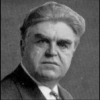John L. Lewis

John L. Lewis
John Llewellyn Lewiswas an American leader of organized labor who served as president of the United Mine Workers of Americafrom 1920 to 1960. A major player in the history of coal mining, he was the driving force behind the founding of the Congress of Industrial Organizations, which established the United Steel Workers of America and helped organize millions of other industrial workers in the 1930s. After resigning as head of the CIO in 1941, he took the Mine Workers out...
NationalityAmerican
ProfessionLeader
Date of Birth12 February 1880
CountryUnited States of America
Five of the corporations in the steel industry elected to resist collective bargaining and undertook to destroy the steel workers' union.
Ordinary problems affecting wages, hours, and working conditions, in most instances, will quickly respond to negotiation in the council room.
Let the workers organize. Let the toilers assemble. Let their crystallized voice proclaim their injustices and demand their privileges. Let all thoughtful citizens sustain them, for the future of Labor is the future of America.
Workers have kept faith in American institutions. Most of the conflicts, which have occurred have been when labor's right to live has been challenged and denied.
Out of the agony and travail of economic America the Committee for Industrial Organization was born.
The workers of the nation were tired of waiting for corporate industry to right their economic wrongs, to alleviate their social agony and to grant them their political rights. Despairing of fair treatment, they resolved to do something for themselves.
In the steel industry the corporations generally have accepted collective bargaining and negotiated wage agreements with the Committee for Industrial Organization.
Unionization, as opposed to communism, presupposes the relation of employment; it is based upon the wage system and it recognizes fully and unreservedly the institution of private property and the right to investment profit.
But the Committee for Industrial Organizations is here. It is now henceforth a definite instrumentality, destined greatly to influence the lives of our people and the internal and external course of the republic.